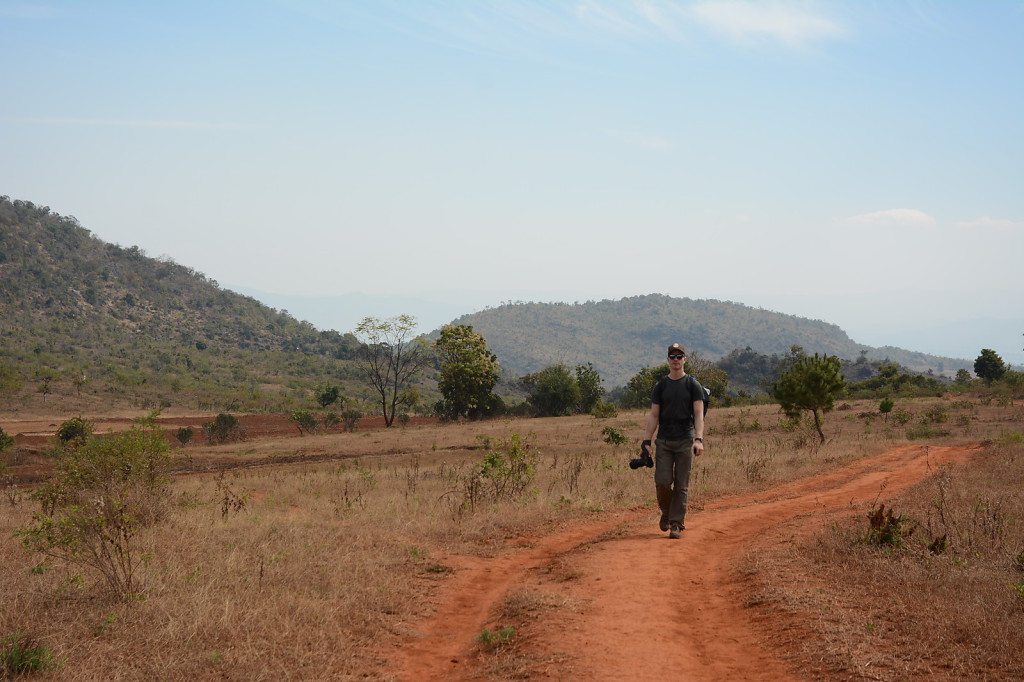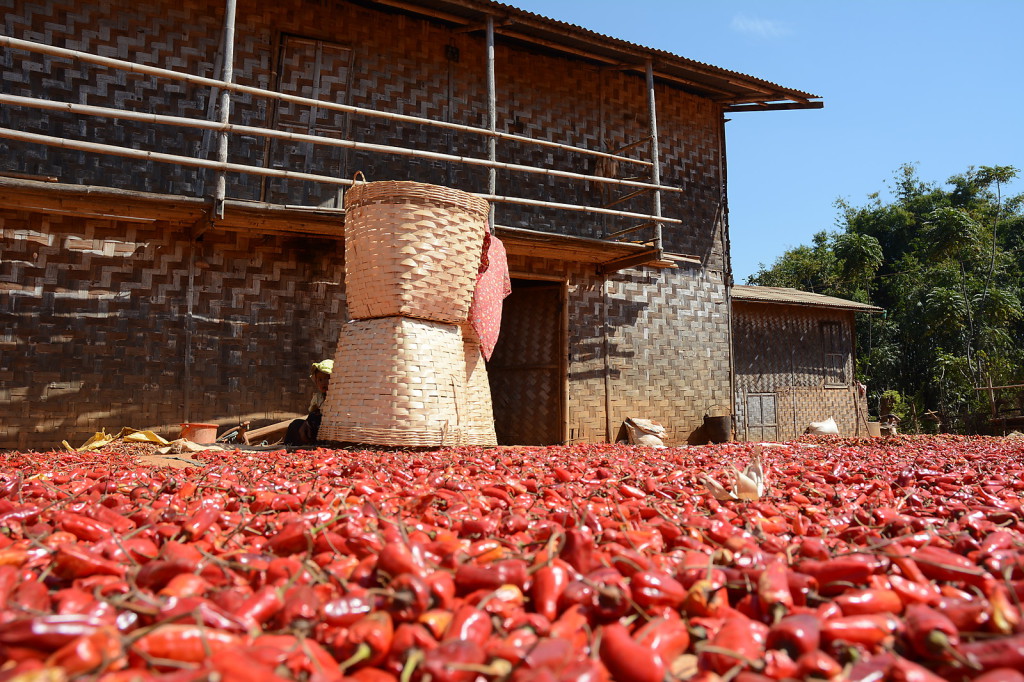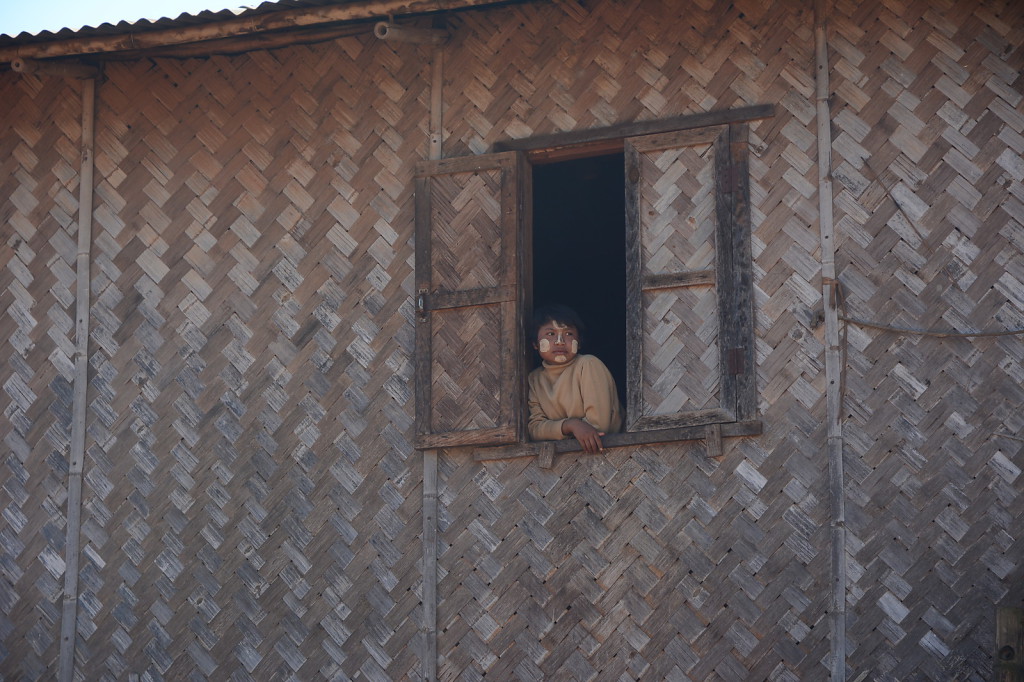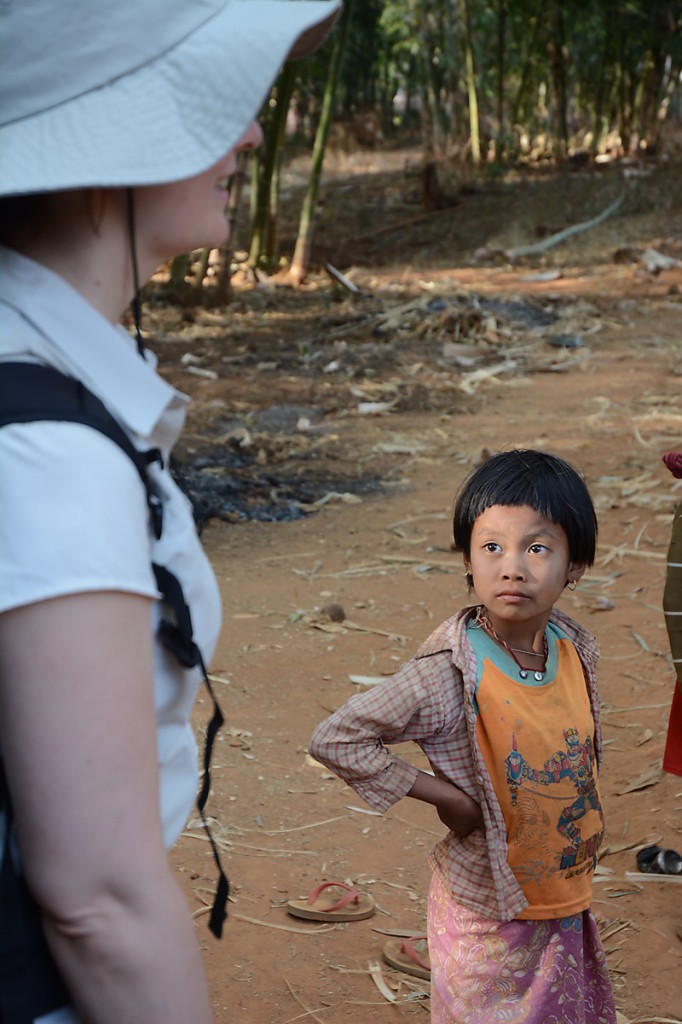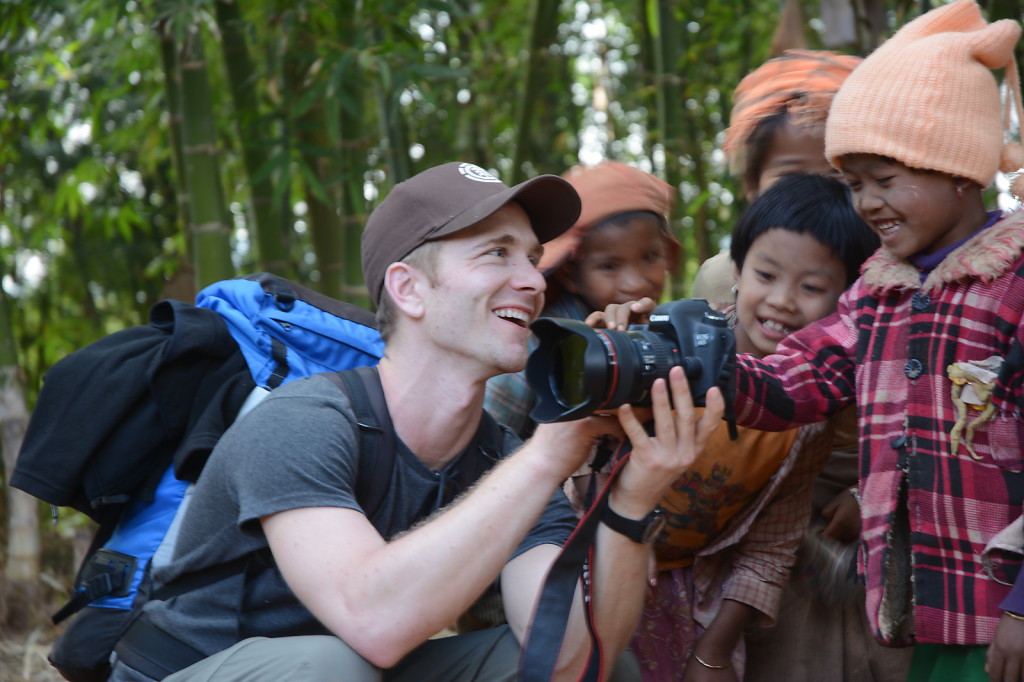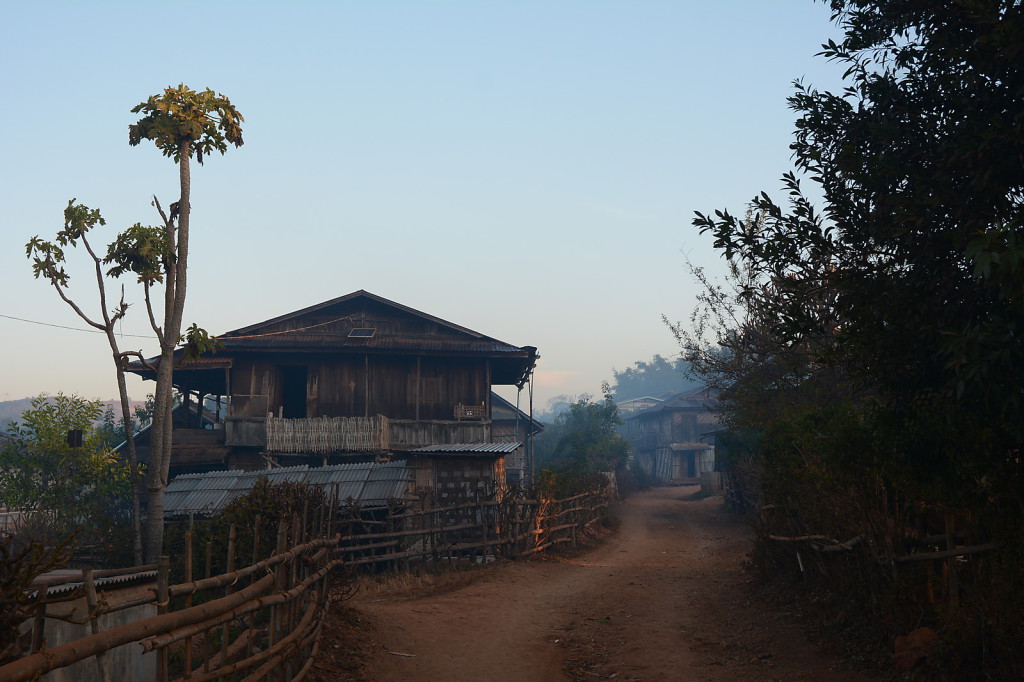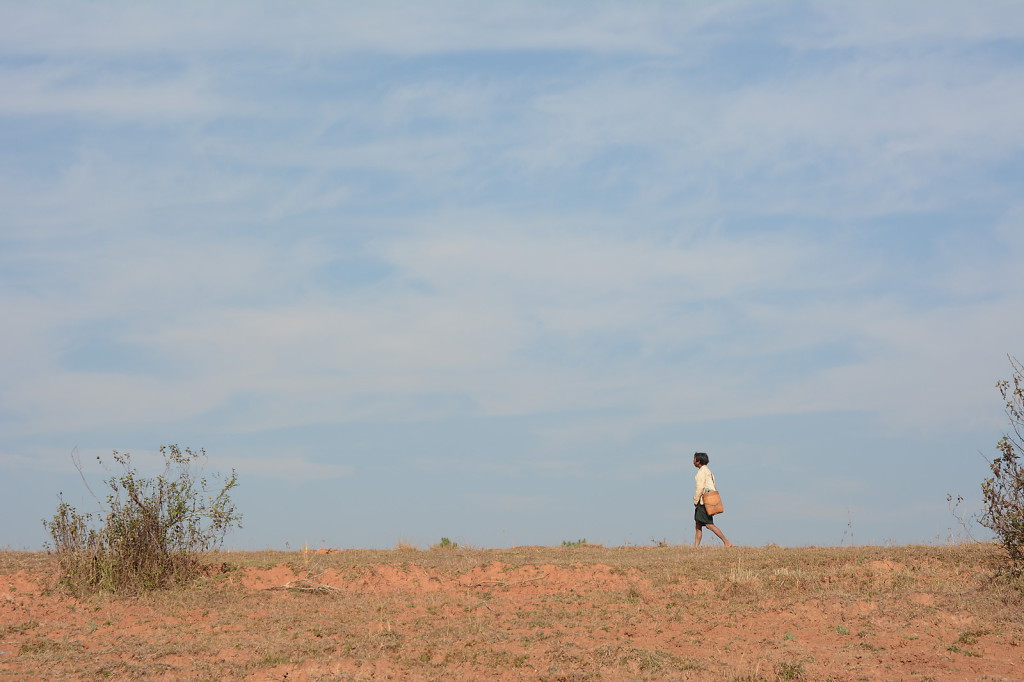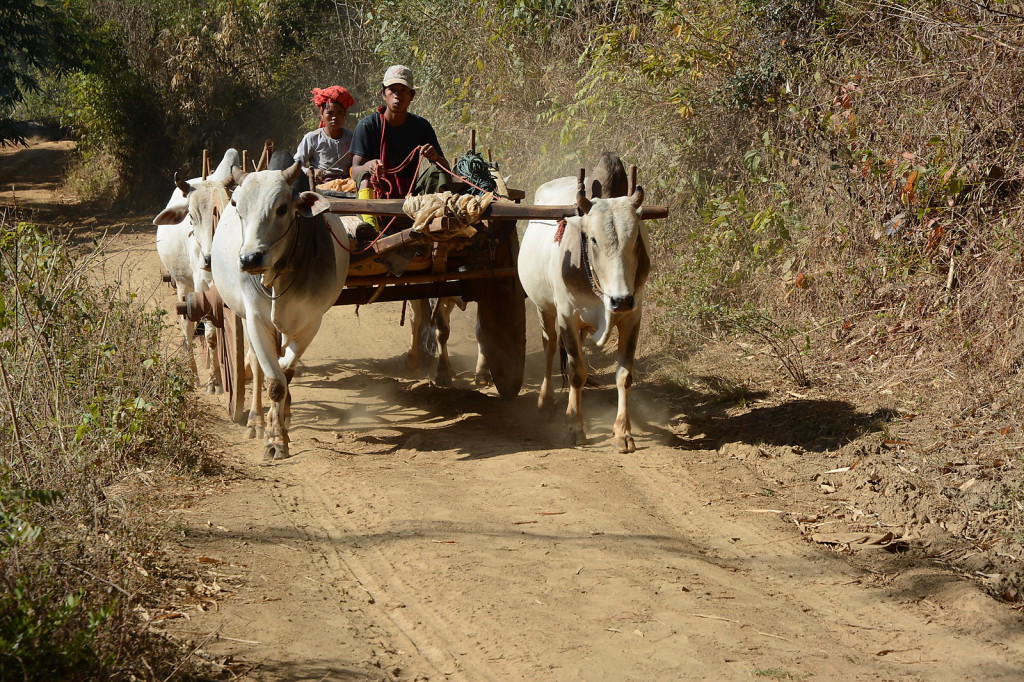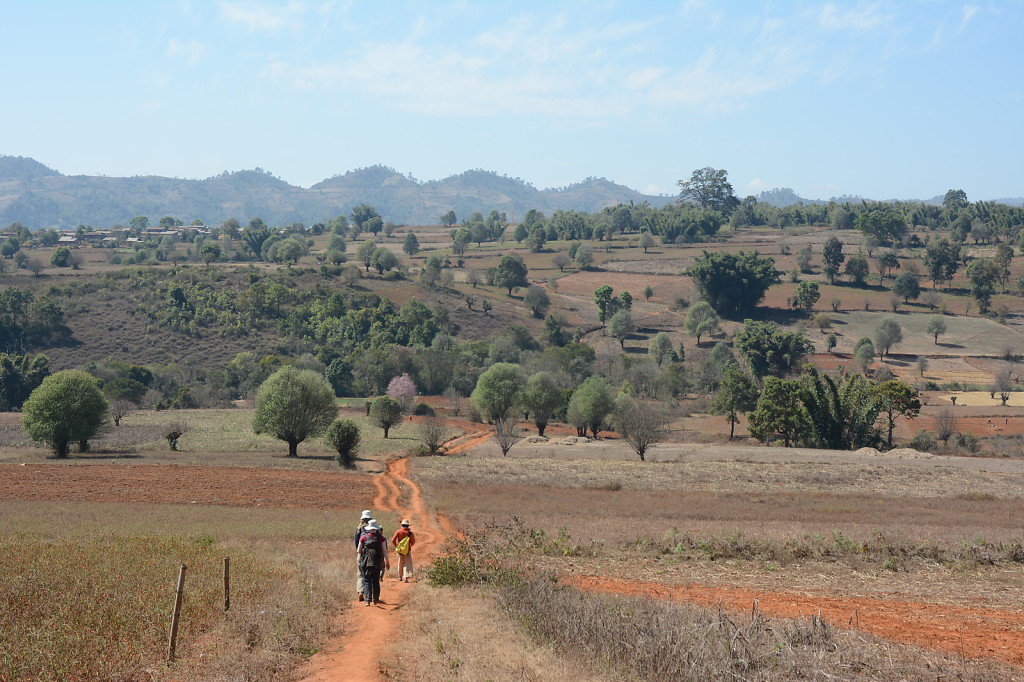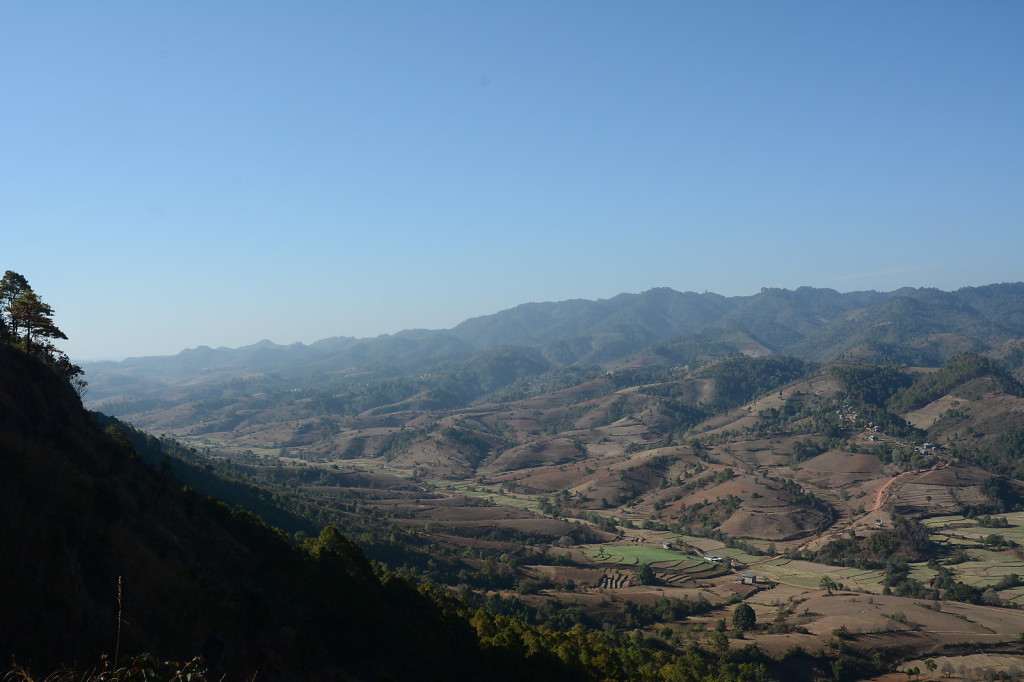Even though we had only 2 weeks in Myanmar, we chose to go on the 3 day trek from Inle Lake to Kalaw. We were a little bit concerned that the experience would be made to artificial for tourists. The trek led from near Inthein on Inle Lake across the rolling hills, across fields ranging from rice to chilli, through small villages to the county prefecture of Kalaw. Being famous for trekking, the town attracts many tourists and sports an excellent selection of hotels. But first we had to get there and even though it was winter, the sun was burning hot from the sky…
We left our hotel in Nyaungshwe early in the morning, to meet a somewhat surprised boatman near the little port. He had expected we stayed at the hotel right next to the port, however coming from somewhere else he was quite surprised to finally find us. On the way to Inthein, we stopped at the Paradise Inle Resort to pick-up Sibylle and Klemens, the Swiss couple who had actually organized the trek and we went on to one last time cross Inle Lake and beautiful floating gardens to meet our guide for the following three days, Kyaw Min (pronounced Chow Min).
The first section of our trek led us away from Inle Lake up a valley, in which we got the first explanations of some of the principles of agriculture in the area. The valley opened up after a while to give us a beautiful view of the rolling hills which were almost completely consumed by various kinds of fields. Only few trees were left, due to extensive use of wood for housing and fires. Families who don’t own a piece of forest have to collect their firewood from public land. So it is not uncommon to see women collecting dried branches for the rainy season. Another interesting fact was around the cows: while we were aware that Hindus do not eat beef and meat didn’t seem to be too common, we were surprised to learn that cows are not kept for milk or meat, but for their dung. The cow dung used to be used for heating, however these days it uniquely serves another purpose: fertilizer.
We soon realized that the way of life in Myanmar almost spans two hundred years of European development: many things operate the same or in a similar way we knew them over 150 years ago, while modern life, mainly in form of smartphones, is also omnipresent in the country. A few things that the villagers are doing the old fashion way:
- Ploughing using oxen
- Ox-carts to transport heavy goods
- Cooking on open fire
- Hand-processing of cow dung to prepare as fertilizer, where every family has a pile in their backyard
- No or very limited electricity in the villages and typically one TV per village
- No running water in households
- No sewage
All in all our trek showed us a lot of the “real” Myanmar, away from the main tourist drags where everything appears to be commodity, with every guesthouse and hotel offering WiFi and hot water.
While we met a few hiking groups in the morning of our first day, we did not cross any other groups during the remainder of our trek. Since we did take the longer path, we possibly avoid other tourist and had an experience which might have been a little less influenced by foreigners. It was interesting to observe the curiosity of the local people, particularly the children. They were very interested in these white people crossing their villages and getting to interact with them. While the adults where a little bit more reserved, but always polite and friendly, the children had inhibitions whatsoever. It was a joy fooling around with them.
Besides many, many observations we also heard a lot about the daily routines of the local people from our guide, Kyaw Min. Patiently he made sure the four of us learned a lot about the Shan state and its people. Most importantly, he taught us the minimal vocabulary in the Myanmar language (or Myanmar Speak as some locals call it, which is an interesting connection, knowing that locals try to sell George Orwell’s Burmese Days to visitors) anyone visiting the country should know (roughly):
- Ming-ah-la-ba: Hello
- Da-da or thua-may: Goodbye
- Jie-tsu-bay: Thank you
- Jie-tsu-dian-ba-day: Thank you very much
- Jie-bah-day: You are welcome
While we learned and observed a lot about and of the local life, we were surprised to learn in the evening that Kyaw Min’s brother had accompanied us all along not to learn more about tourist and how to be a guide, but to cook for us at our host’s place. We were shown our comfy place to sleep, a thin mattress on the wooden floor and three thick covers to make sure we wouldn’t freeze at night. After a freezing cold shower, which we had to create ourselves, because there was no running water, but only a large barrel of water and a bowl, we returned inside to find Kyaw Min’s brother cooking and preparing a delicious meal. Typical Myanmar food was nicely presented. It looked like the villagers were treated a feast, since we were sure that what we were served would not reflect their daily meal…
During the night we learned why we had gotten three blankets: even though temperatures during the day reached more than 30 degrees centigrade, the nights were freezing cold. And of course the minimum temperature was reached in the morning when it was time to get up. We enjoyed the sunrise and the atmosphere it created in the village before breakfast. Once we were strengthened, we started our hike with a visit of the local monastery before leaving the village westwards.
Before reaching the fields at the bottom of the mountains however we had to realize that not only the villagers had learned that tourists liked the spot (we had seen tourists almost in every single household…): a company from Yangon is building the first guesthouse in the small village! In return for being allowed to build the guesthouse, the village elder decided that the company had to build a new access road in the steep terrain.
That mankind doesn’t need much to be happy proved a young fellow a little further down the track: while carrying his bamboo trunk to wherever he was going, he sung a nice local song on the top of his lungs. It made the nice misty morning quite an experience!
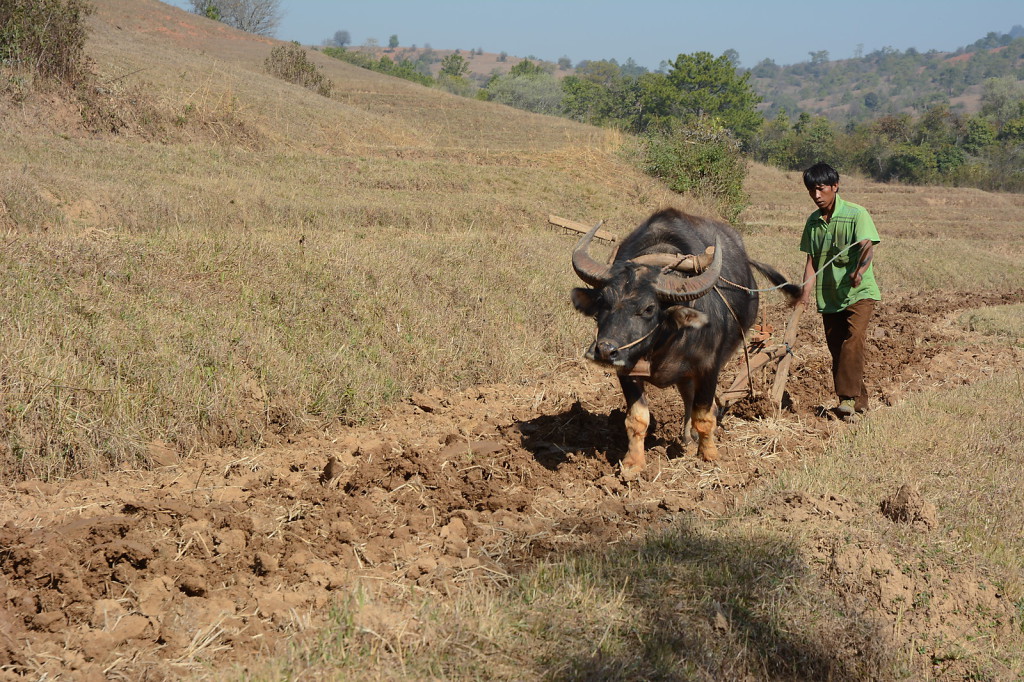
Myanmar’s people span more than 150 years of history, from ox plough and cooking on open fire to smartphone
During our second day of hiking we experienced once again the rural Myanmar at its best. Outside of the larger village we crossed during lunch time, there was almost no motor-powered transportation. People were either on foot, bull or ox-cart. Locals cooled off and washed their animals at a spring, while the tourists walked by in the hot sun. Particularly I had to learn the hard way just how strong the sun in Myanmar is, even in winter. Since we had been walking from East to West for almost two days, the little sun-screen I put on my left arm (facing South almost the whole time) had gotten an amazing sun-burn. It was actually burnt so much that my hand was swollen. Luckily it cured very quickly once we spent a day on the bus following the trek…
We spent our second night in a village on top of a mountain ridge. Since the ridge extended from North to South, it gave us the chance to not only observe the sunset in the evening, but also the sunrise the next morning. Due to the fact that we stayed on top of the ridge, the night also proved to be a little bit warmer than the previous one. The cold air in the valleys below which led to some mist, provided an amazing view to wake up to. It was a fairy tale morning which was only topped by the breakfast we were served right after sunrise. We had enjoyed the morning so much, that we left for our final stretch about one hour late. We paid for the late departure by having to make a final ascent in the burning afternoon heat, before we could make our way down to Kalaw.
After a short search for a place to stay for the night and the purchase of a bus ticket to Bagan for the next day, we had nothing more to do than finding a nice place to eat and relax our bones after three days of hiking through the beautiful hills of Shan state in Myanmar. While other people were disappointed by the fact that the trek led through farmland and no wild jungle, we enjoyed seeing village life and learning about the villagers just as much. If you plan to do this trek too, be warned though: bring sun-protection in all forms and colors!


